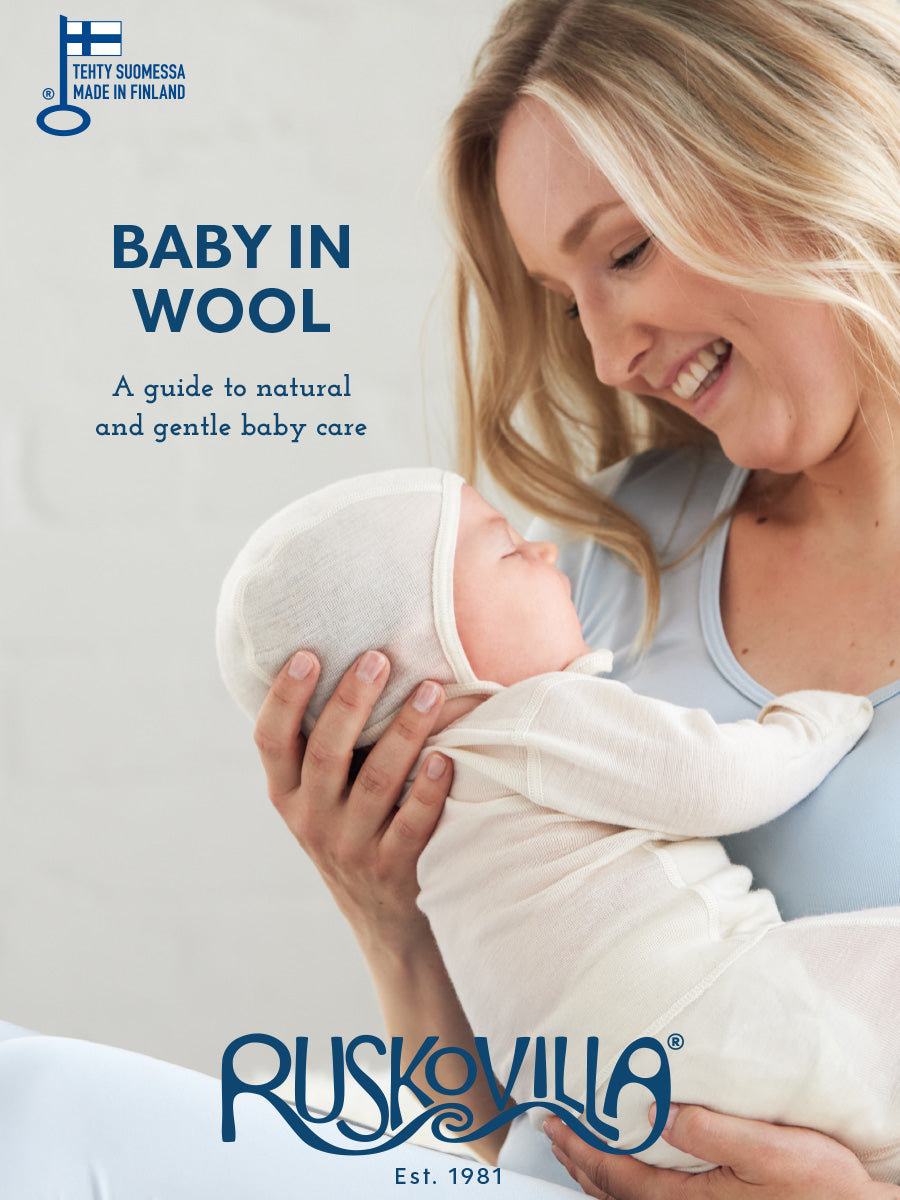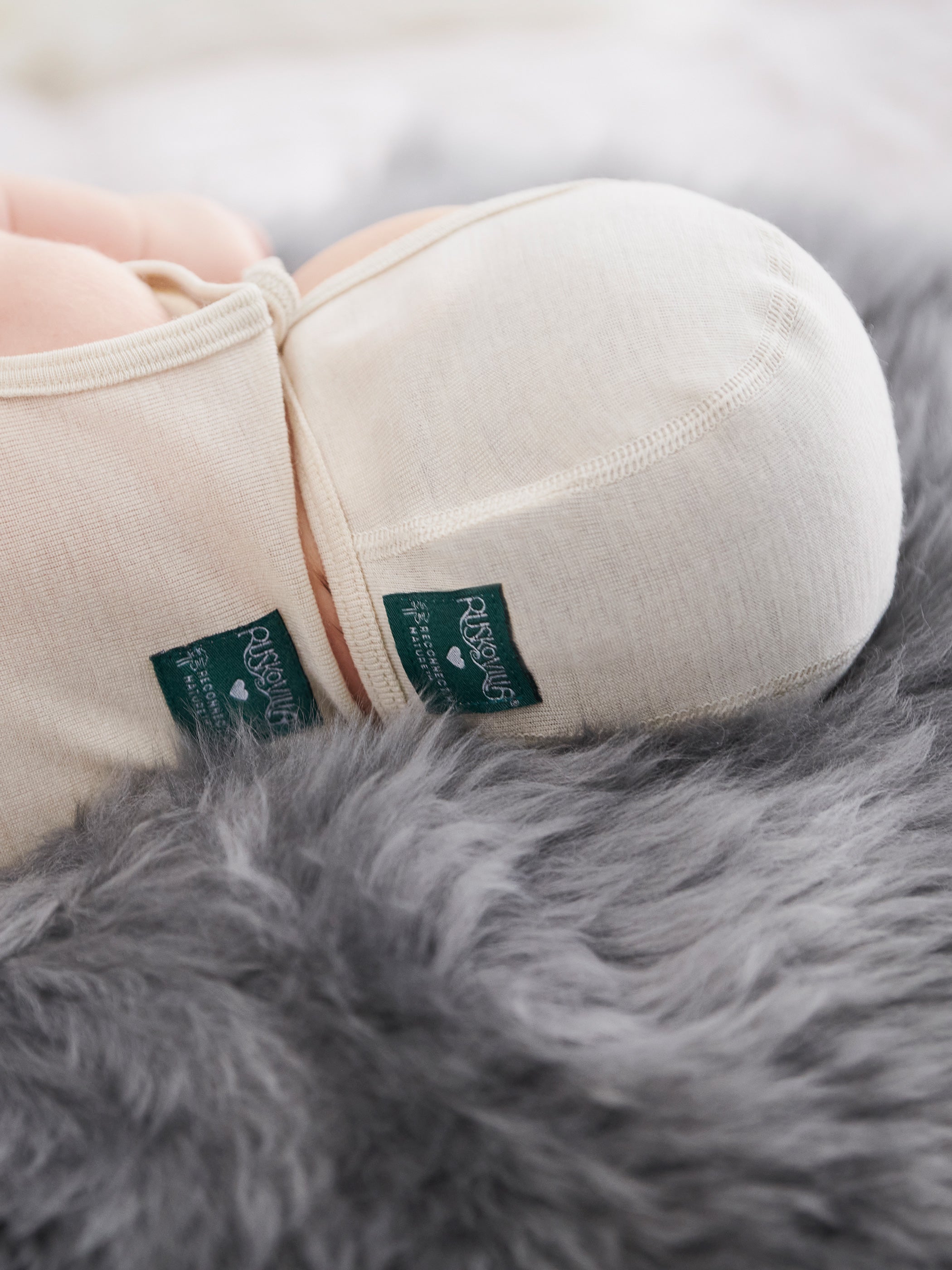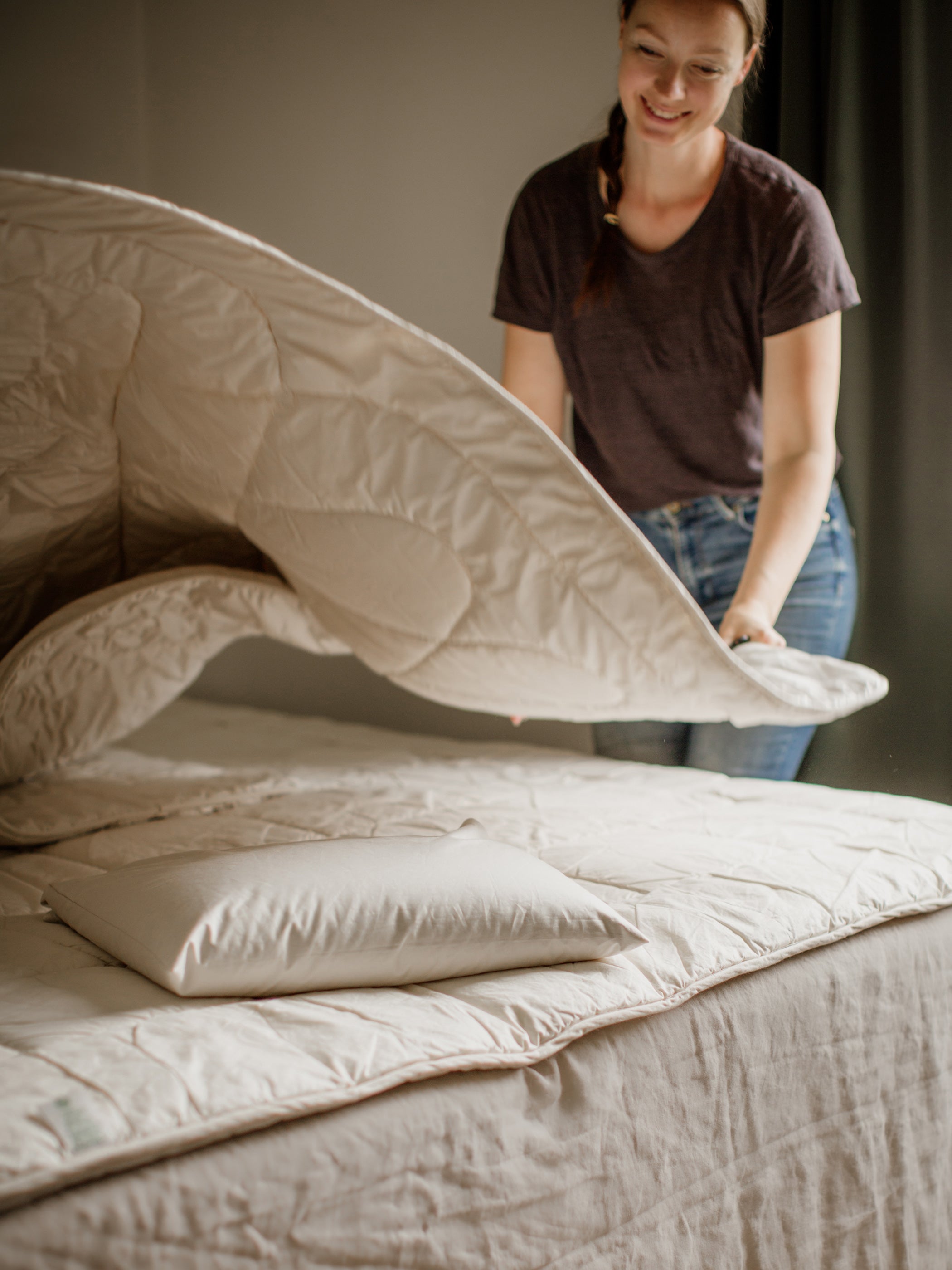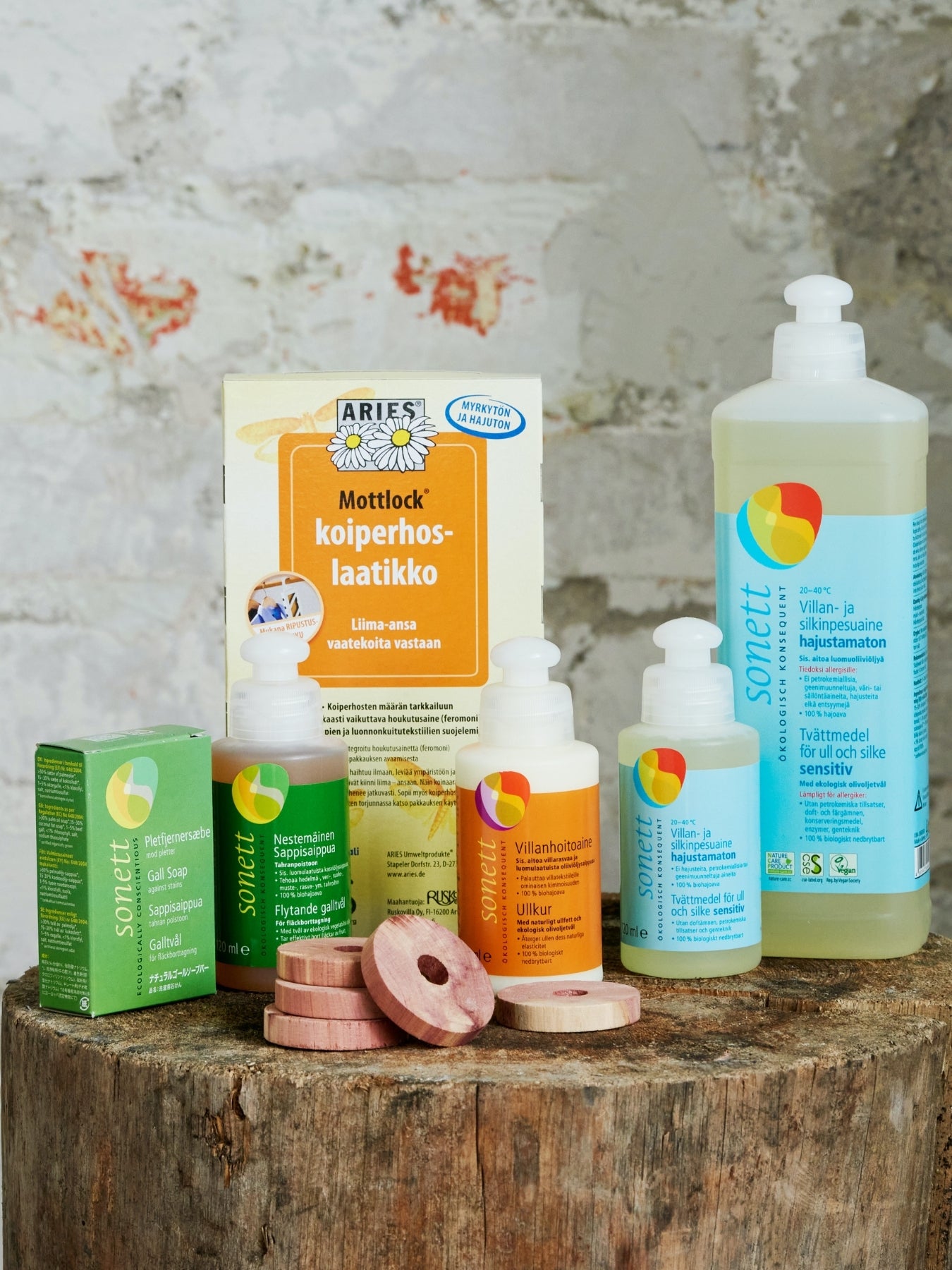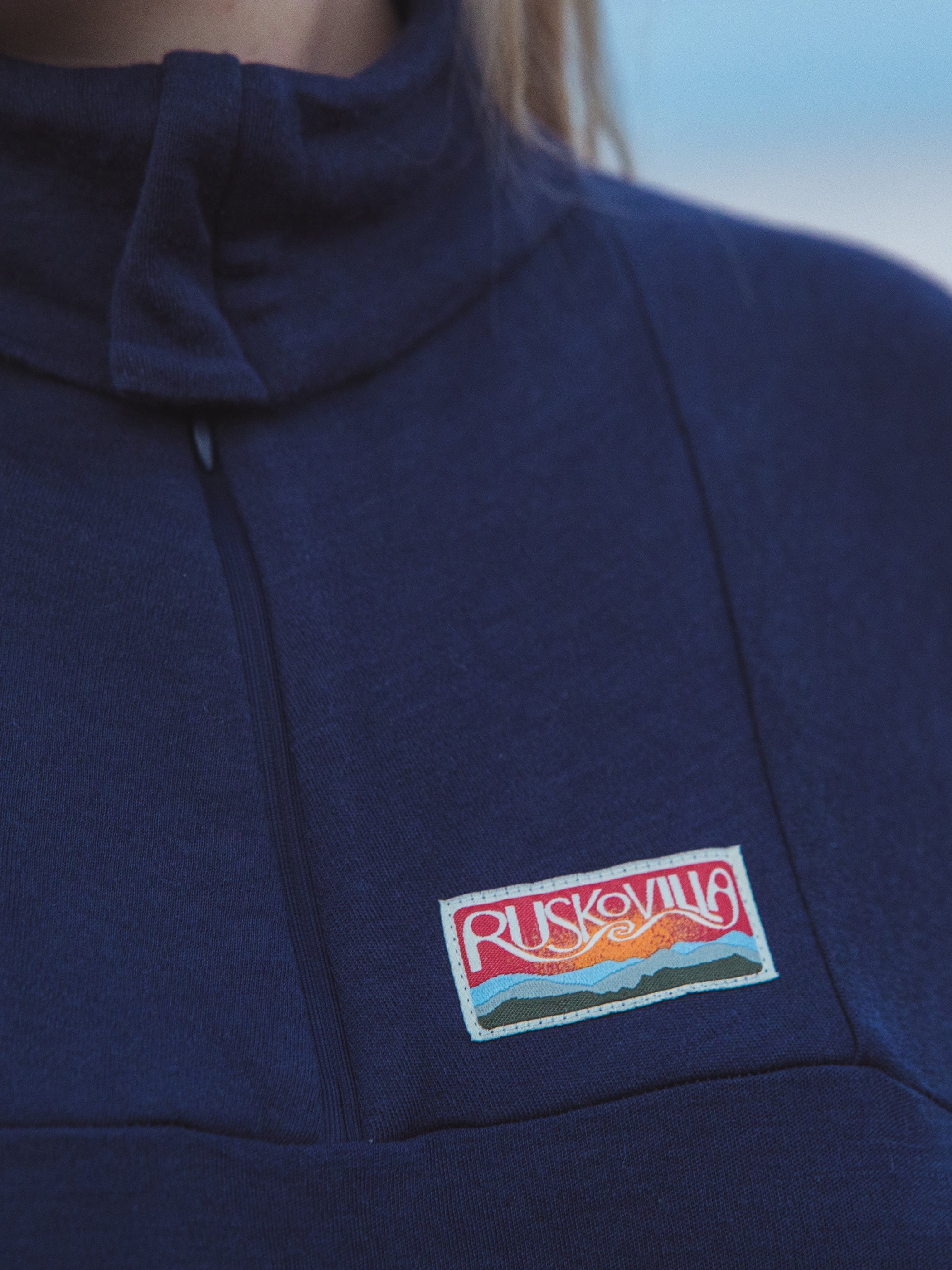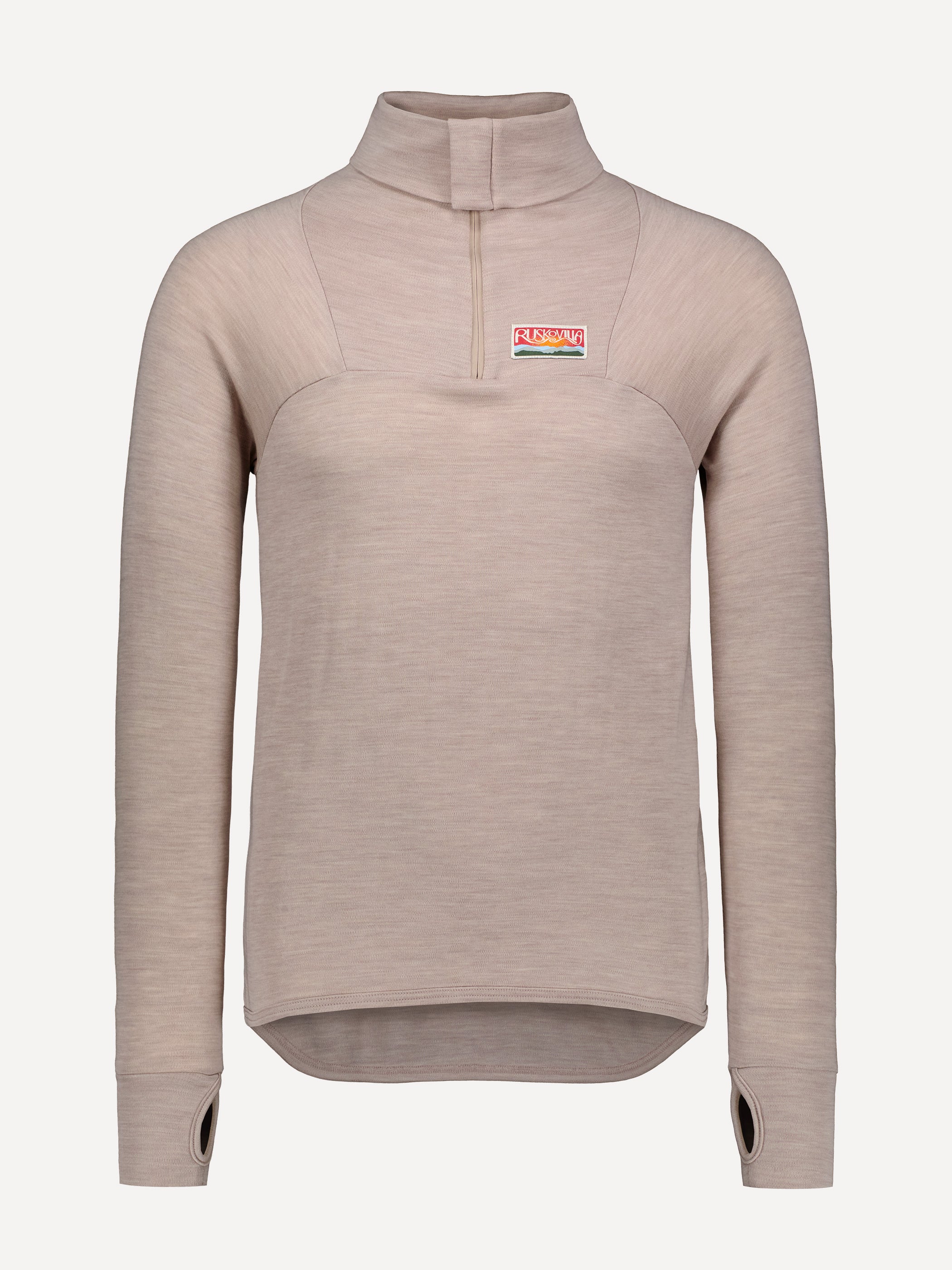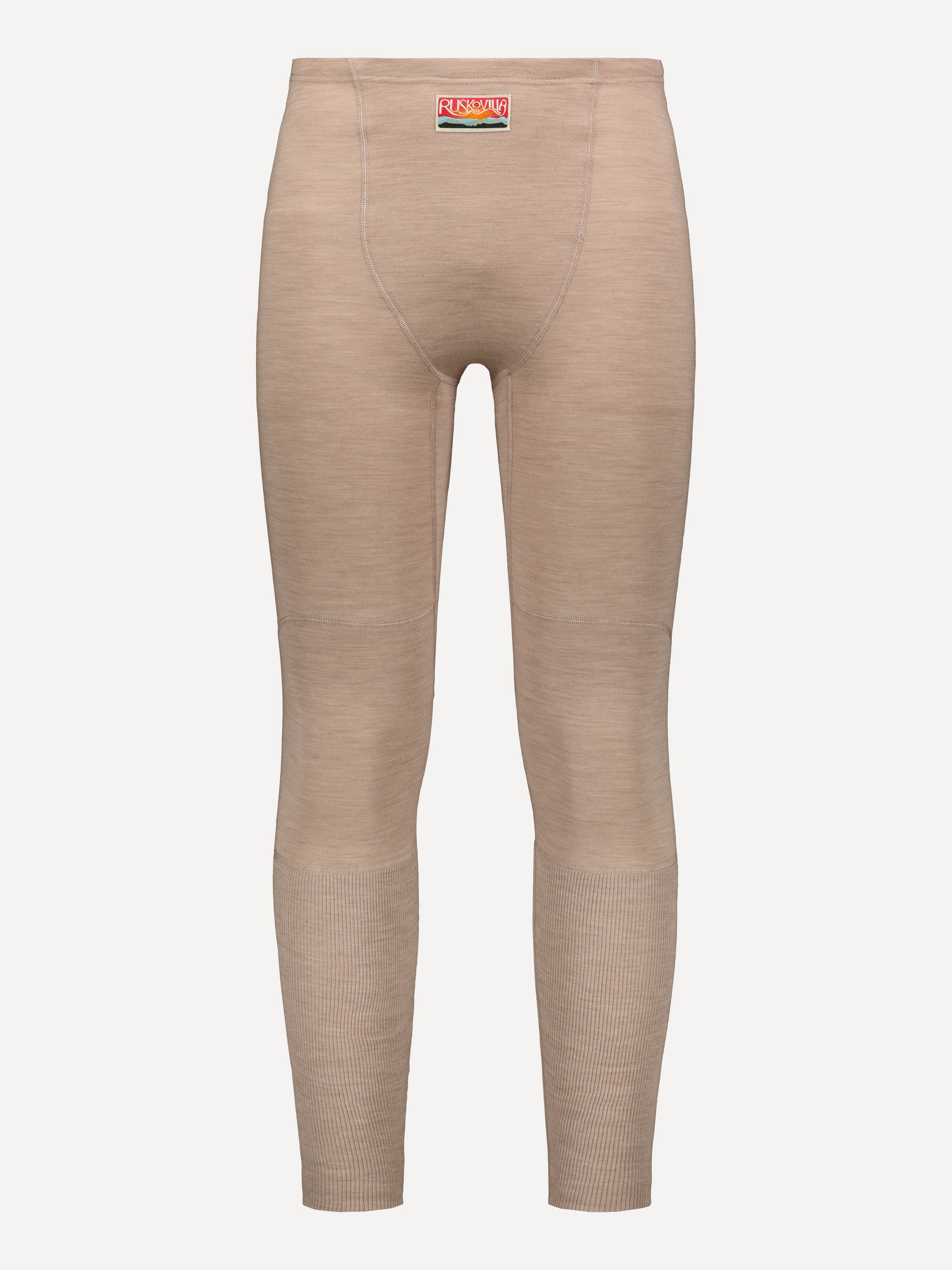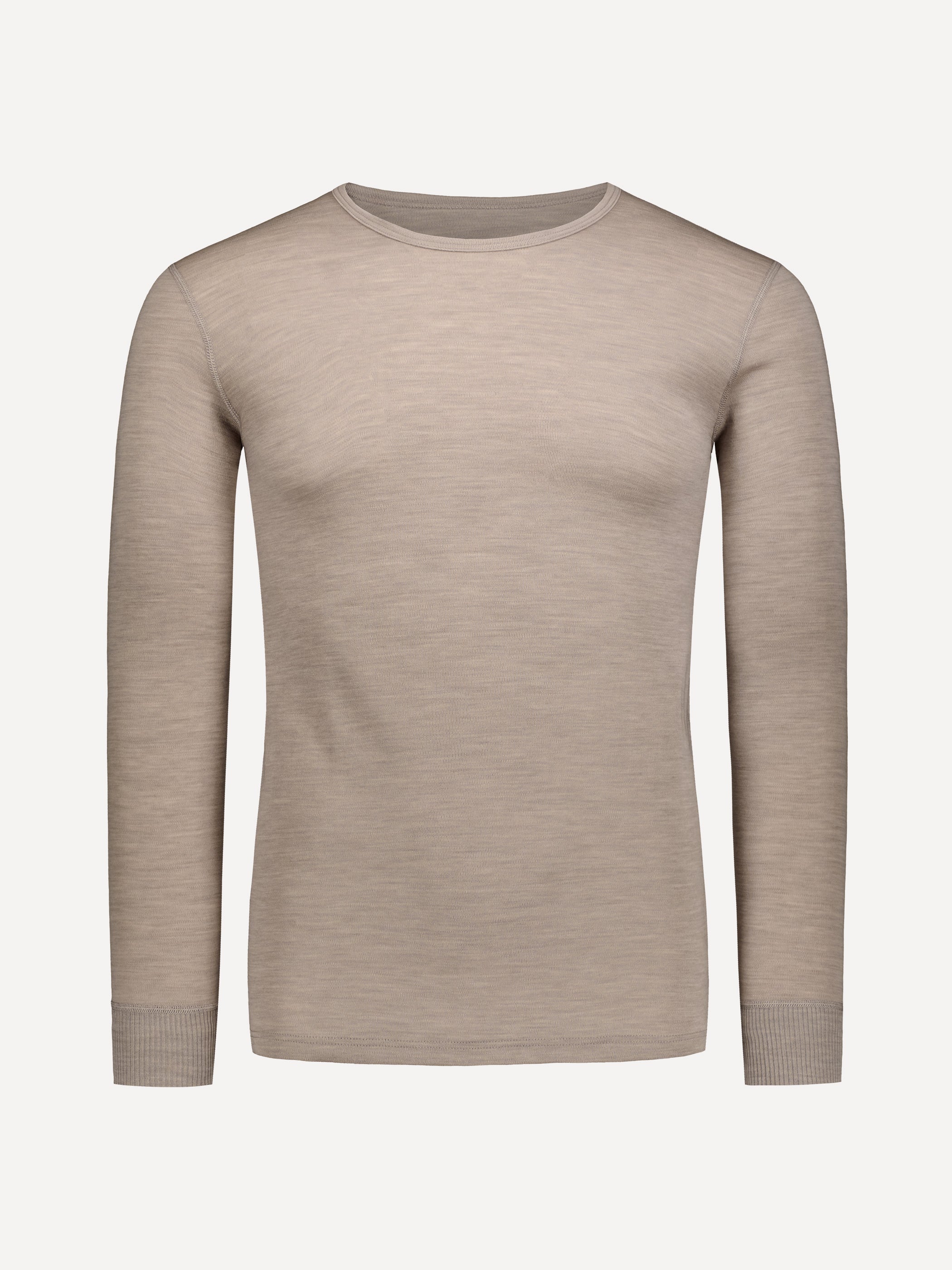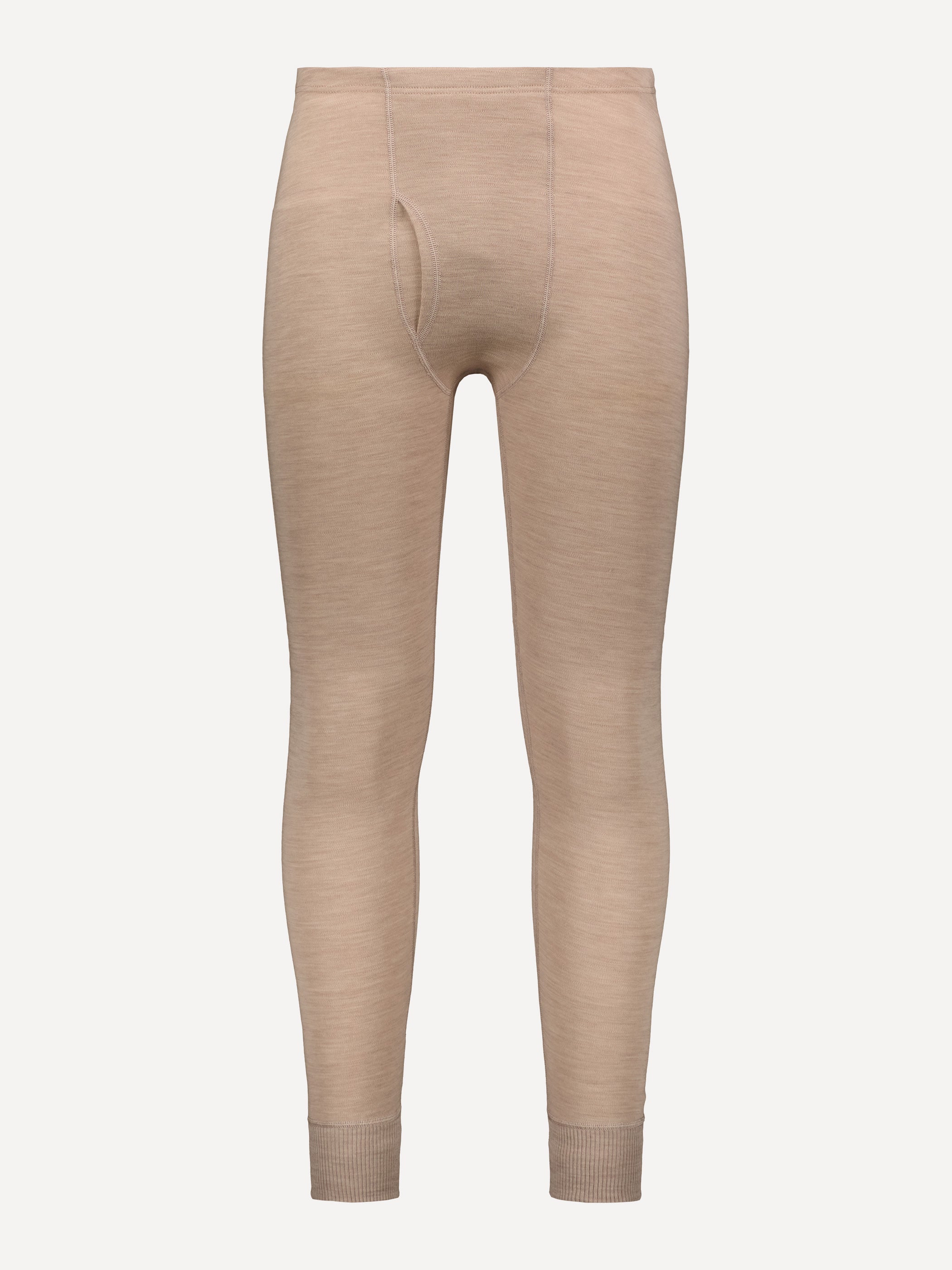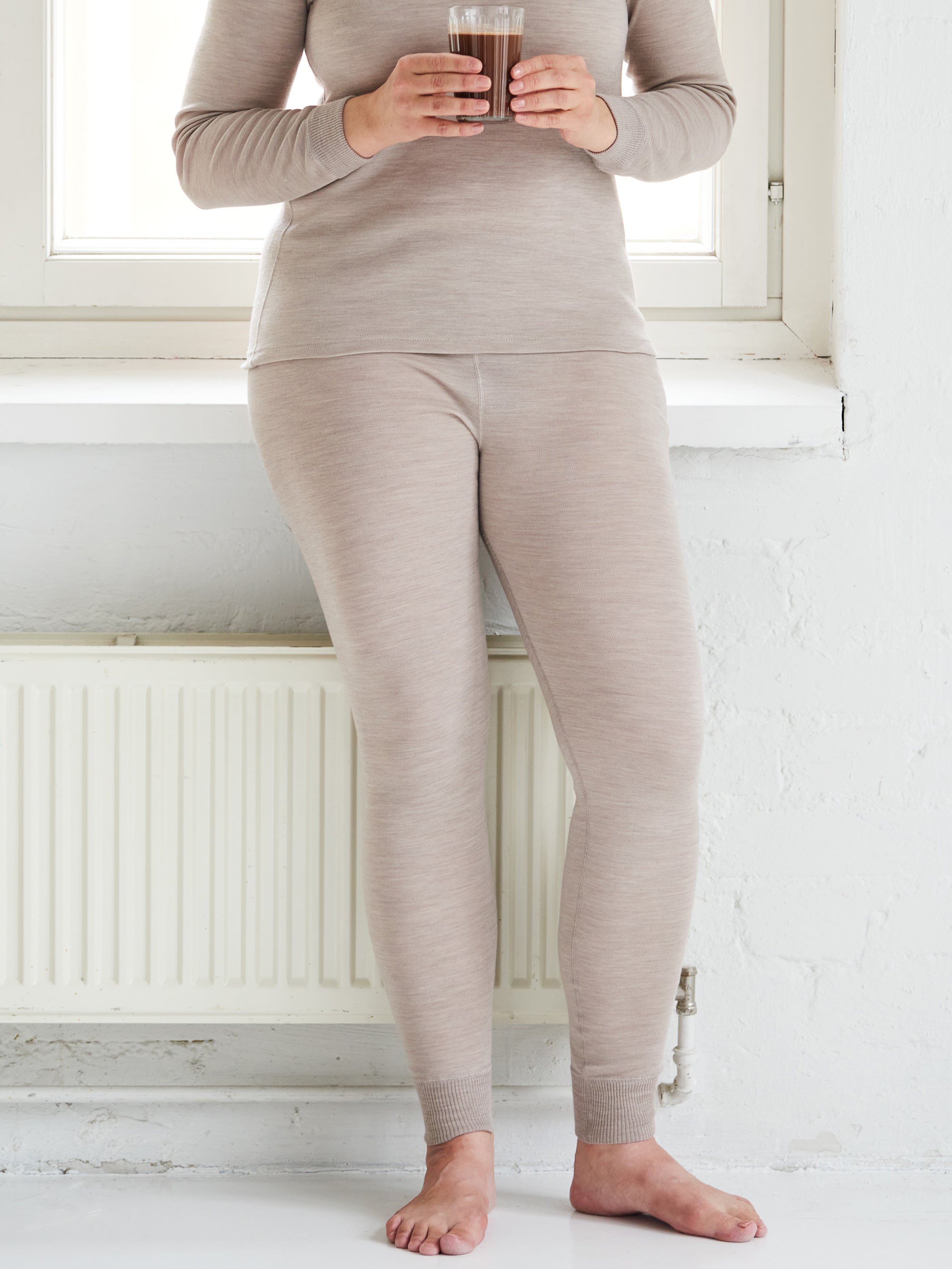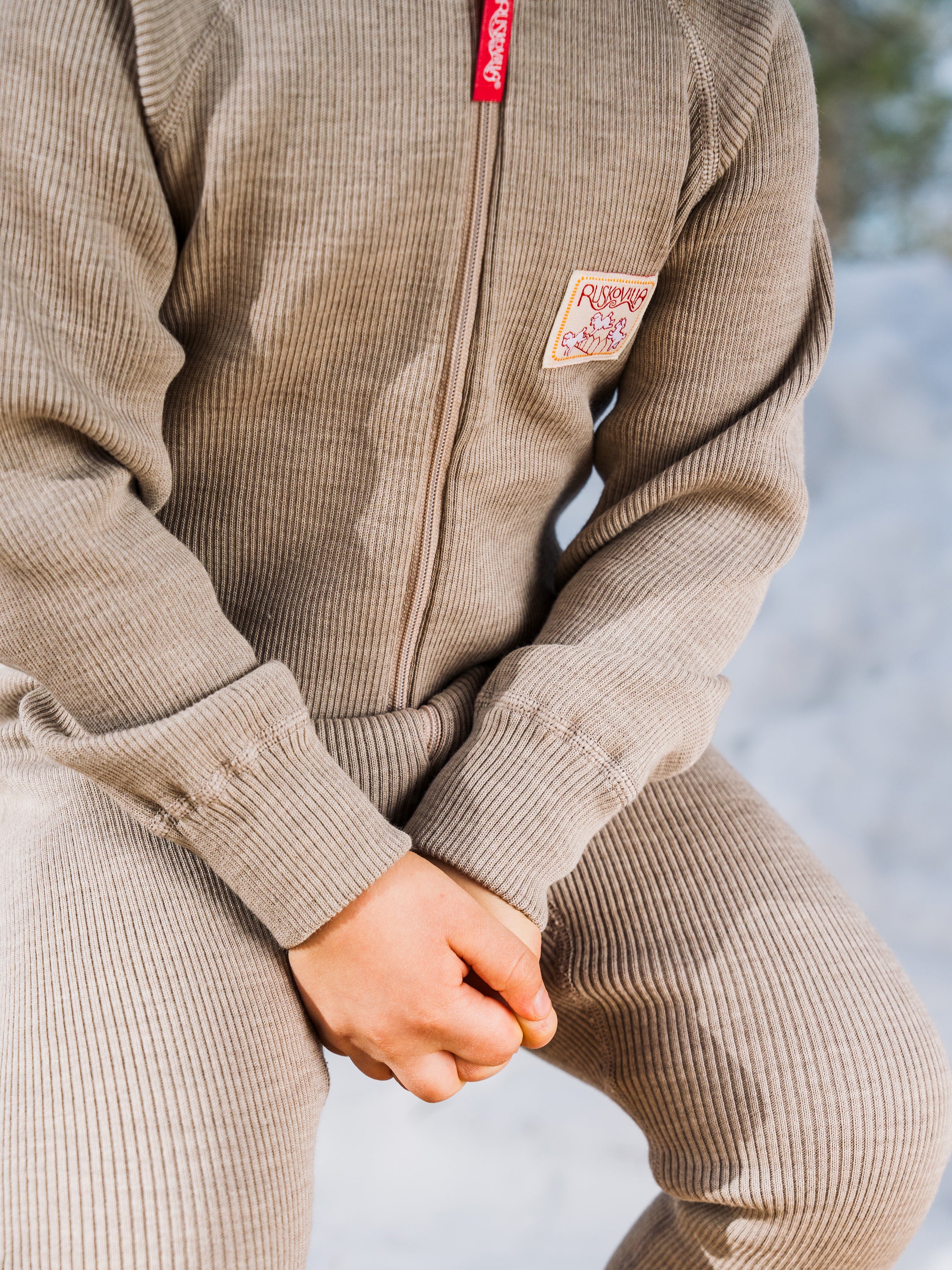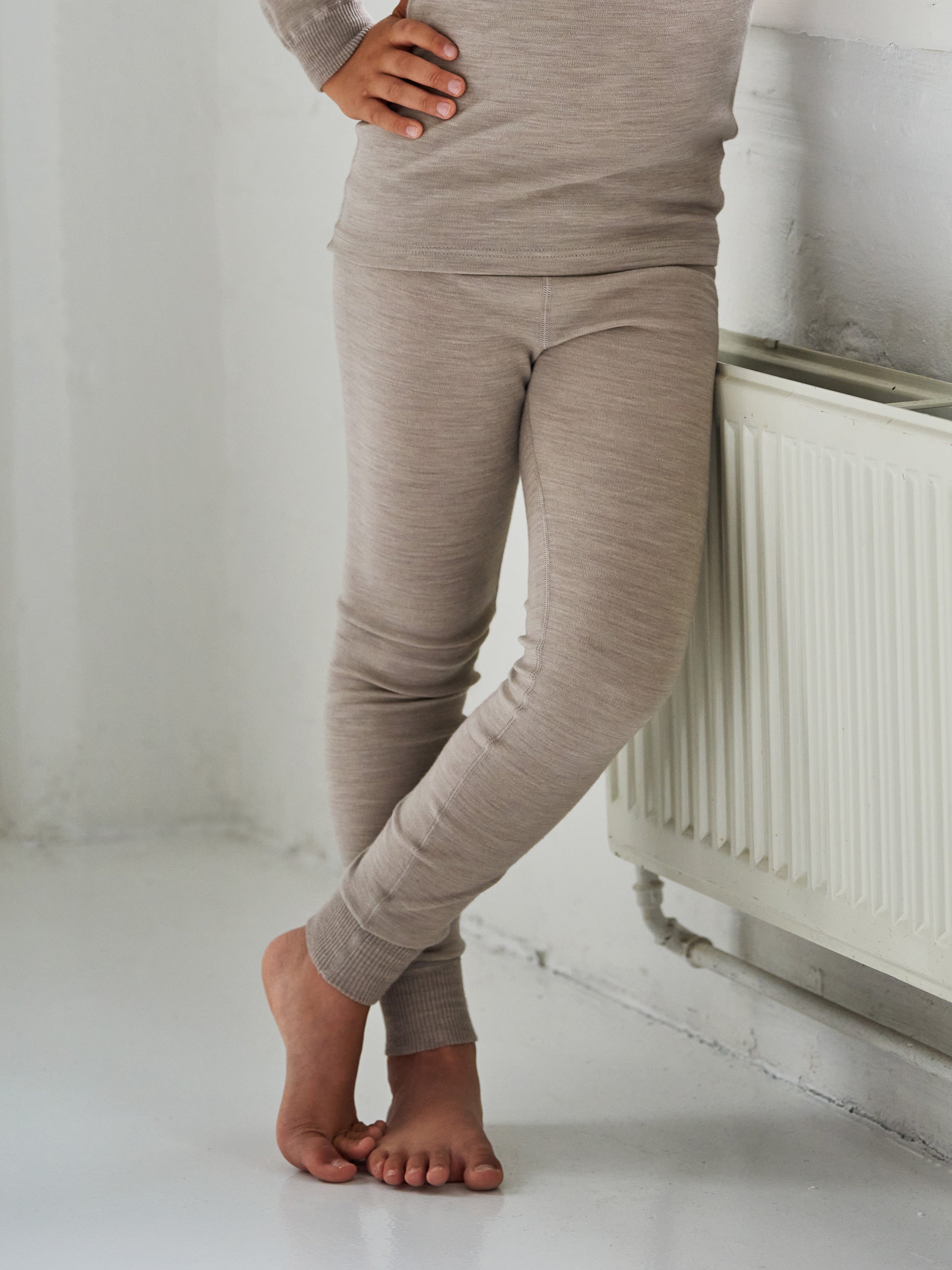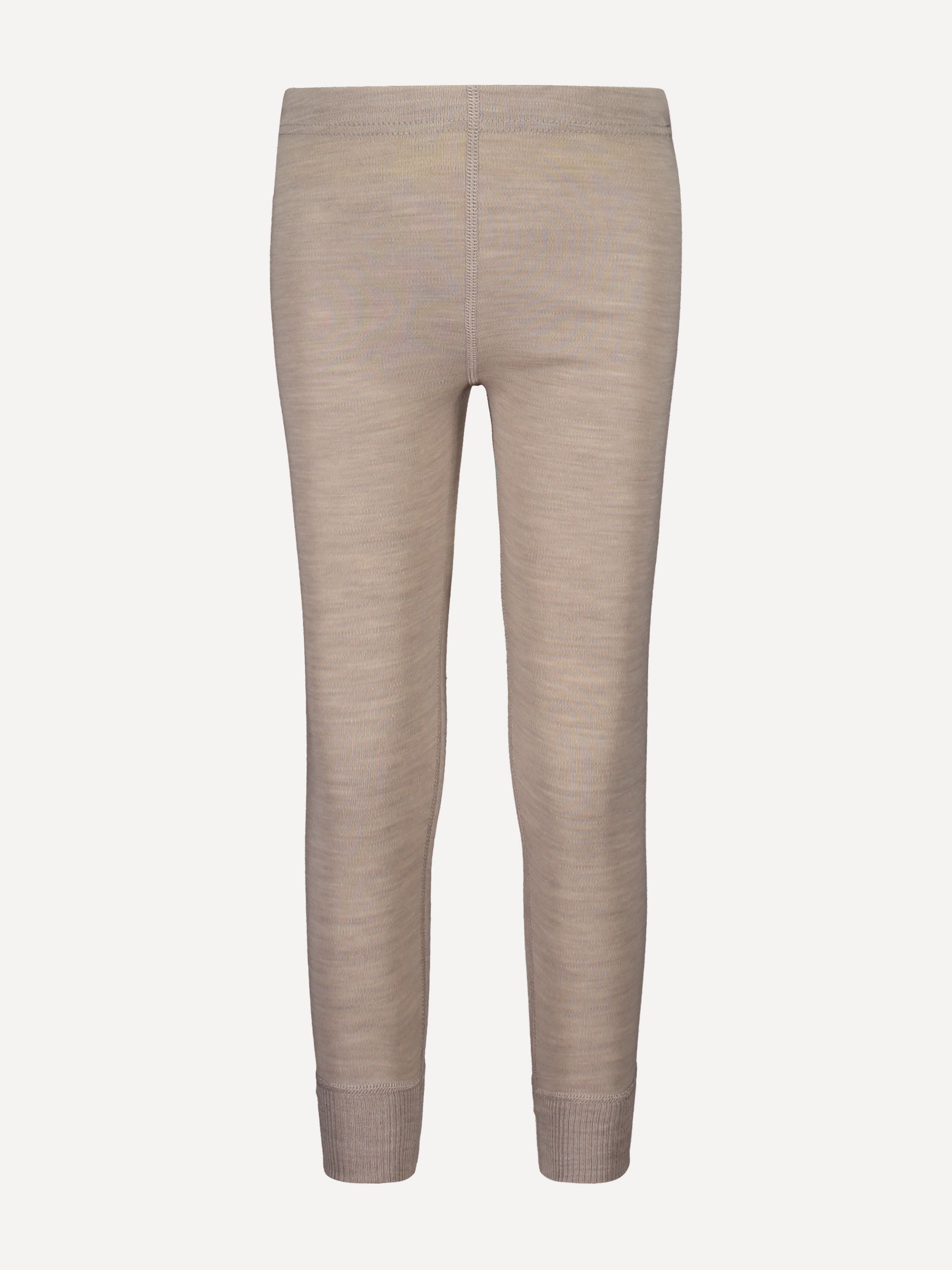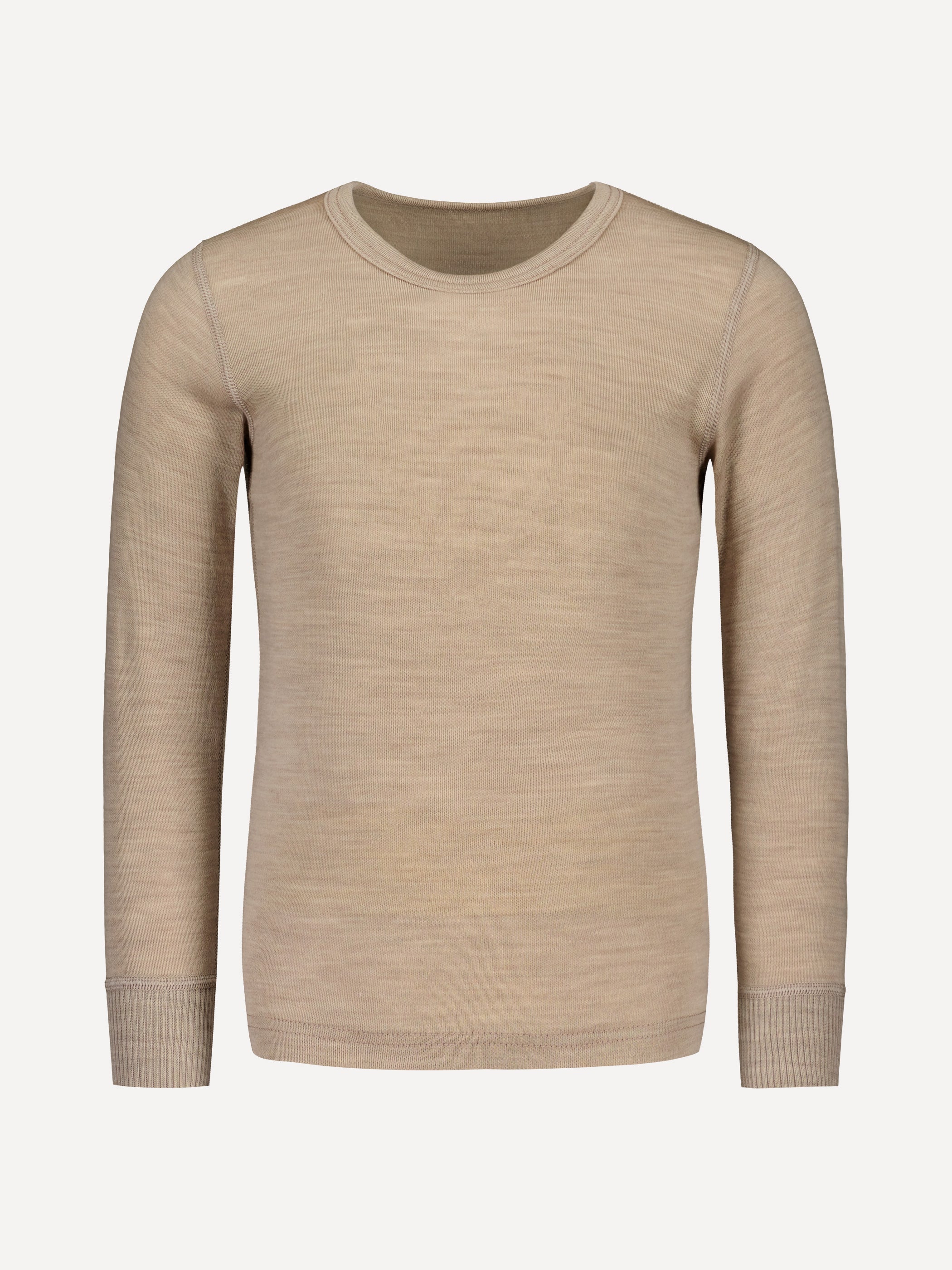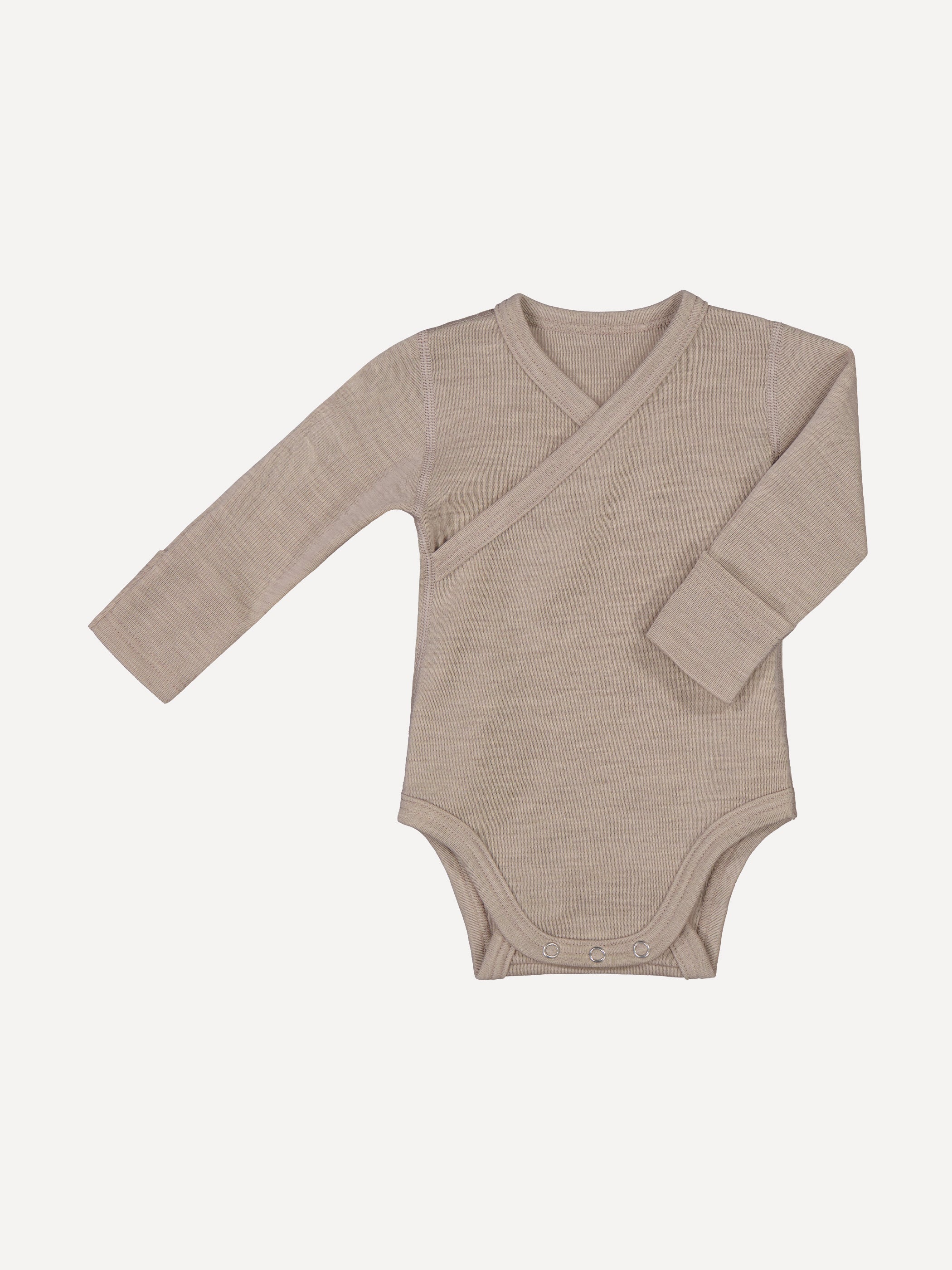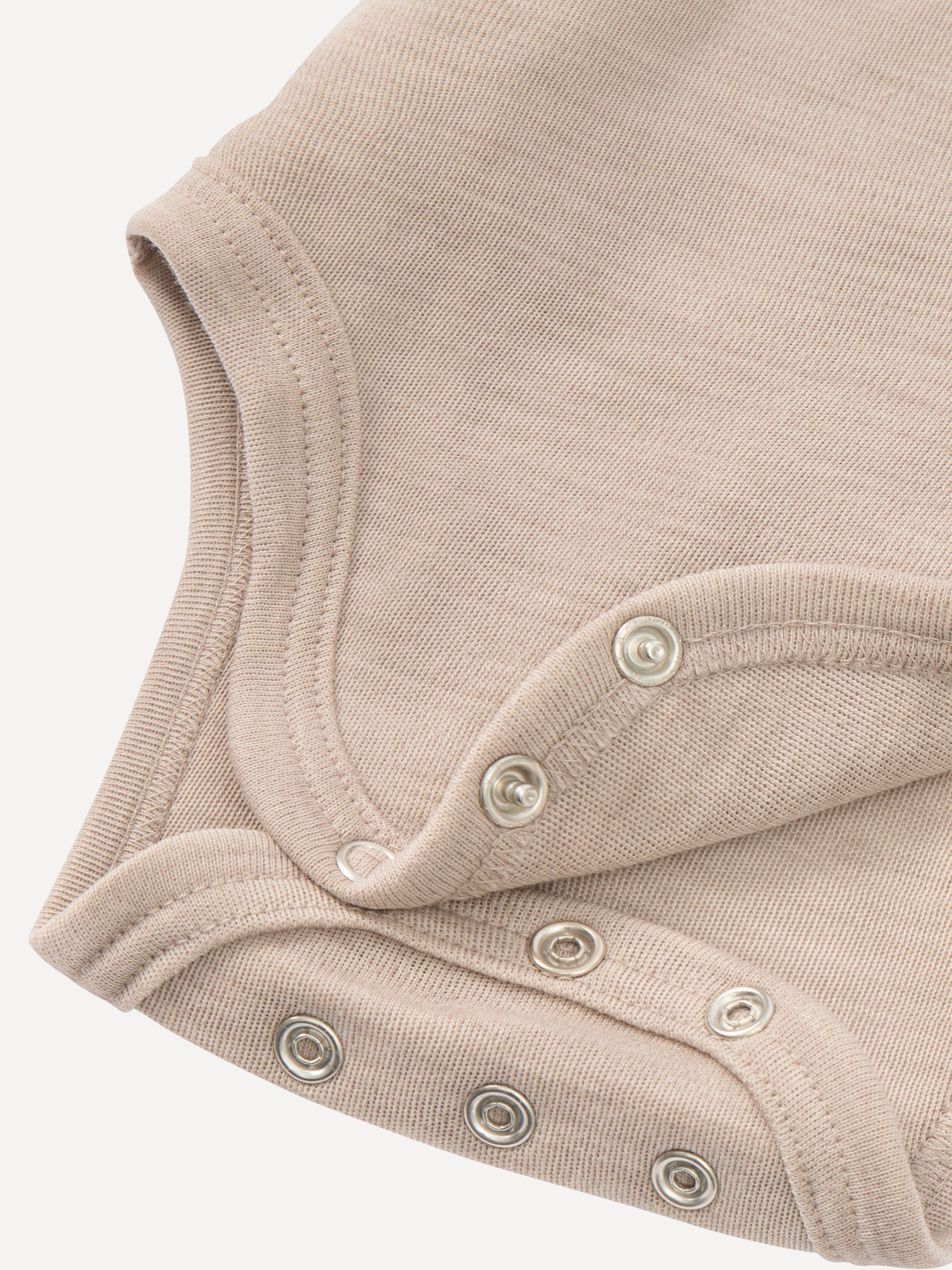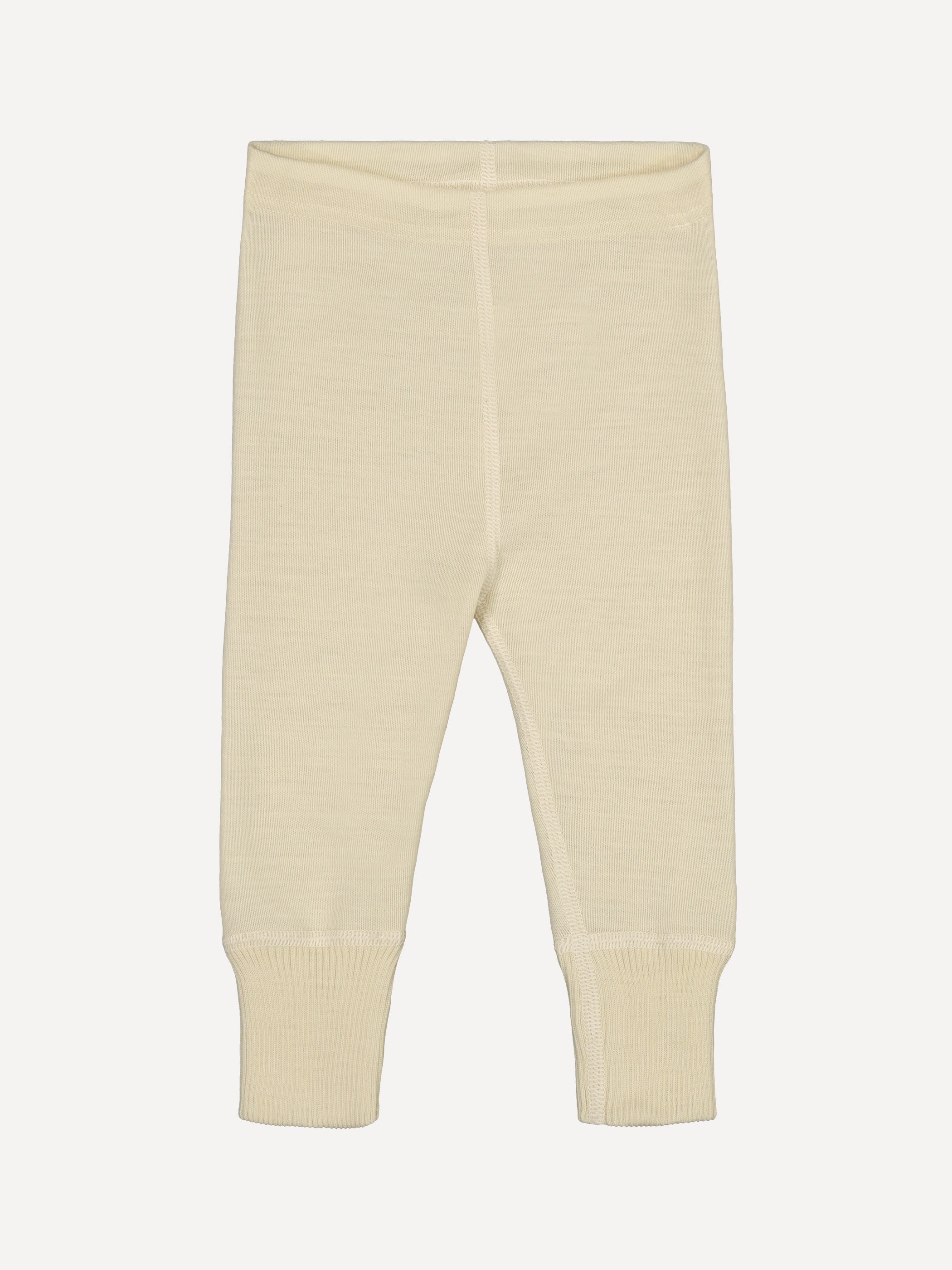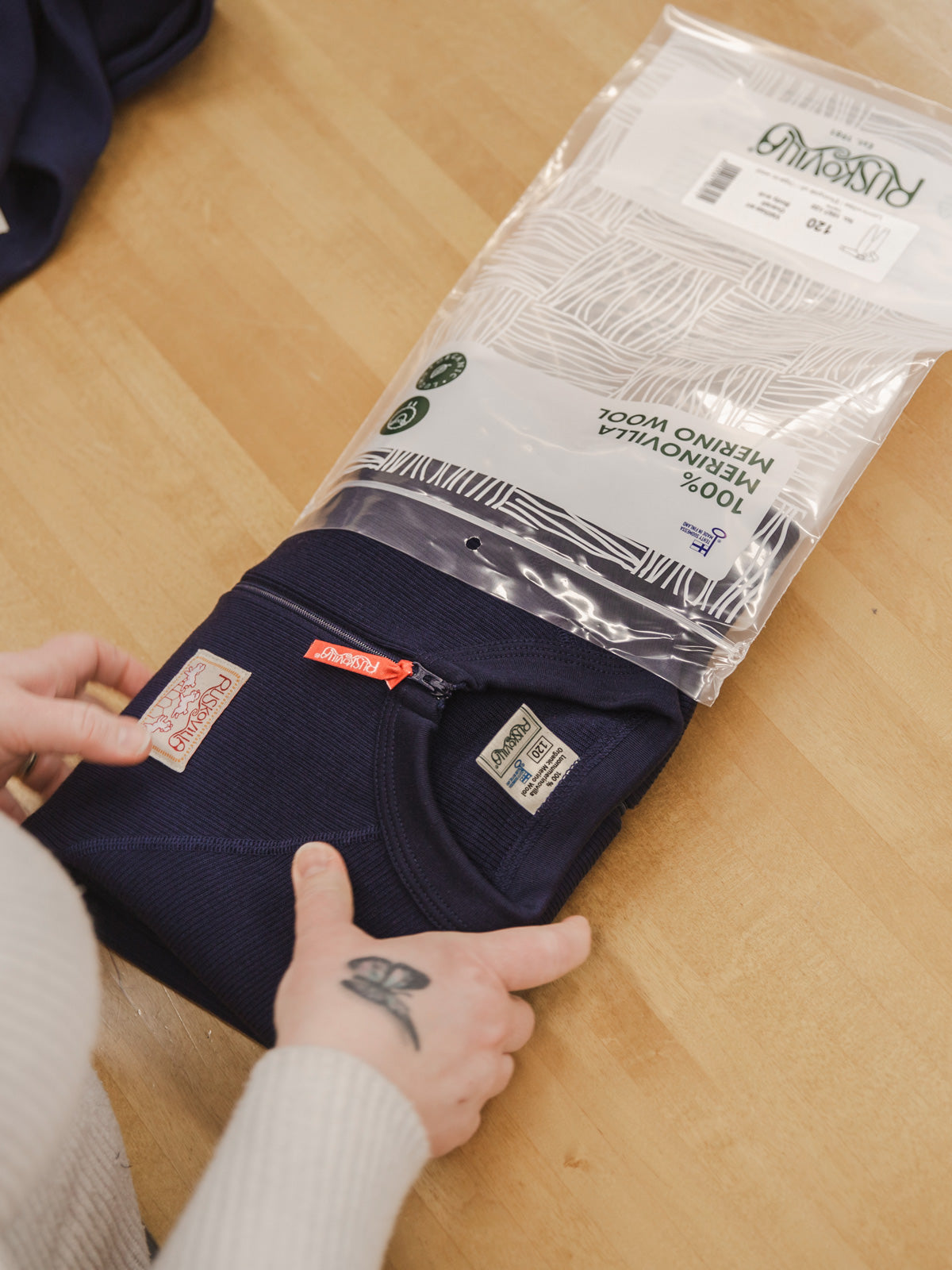Below you will find general instructions for taking good care of our merino wool garments. Always check the washing instructions on the size label and the instructions that come with the product to ensure that you take care of your own product in the best way for it.
Our mulesing-free organic merino wool comes from Argentina and Uruguay. Merino wool is very smooth and therefore ideal for underwear. Our products do not contain any harmful finishing agents, so there is no need to wash them before the first use. However, sometimes even the finest merino wool can feel itchy on sensitive skin. If this is the case, we recommend to wash the garment, as washing softens and smoothes the wool fibers even more.

Air often, wash when necessary
Wool's basic characteristics include its greasiness and curly texture, which also make it repel dirt, odours and moisture. Therefore, the primary method of cleaning wool is airing it away from direct sunlight, rain or a heat source. In particular, low humidity, such as in the bathroom after a shower or in damp air from rain, is good for wool.
After regular use, wool clothing should be washed, as washing helps the wool fibers to recover and retain their elasticity, thus extending the life of the garment. For woollen garments that are used normally on a daily basis, we recommend washing approximately every two weeks. Before storing for longer periods of time, woollen garments should also be washed.
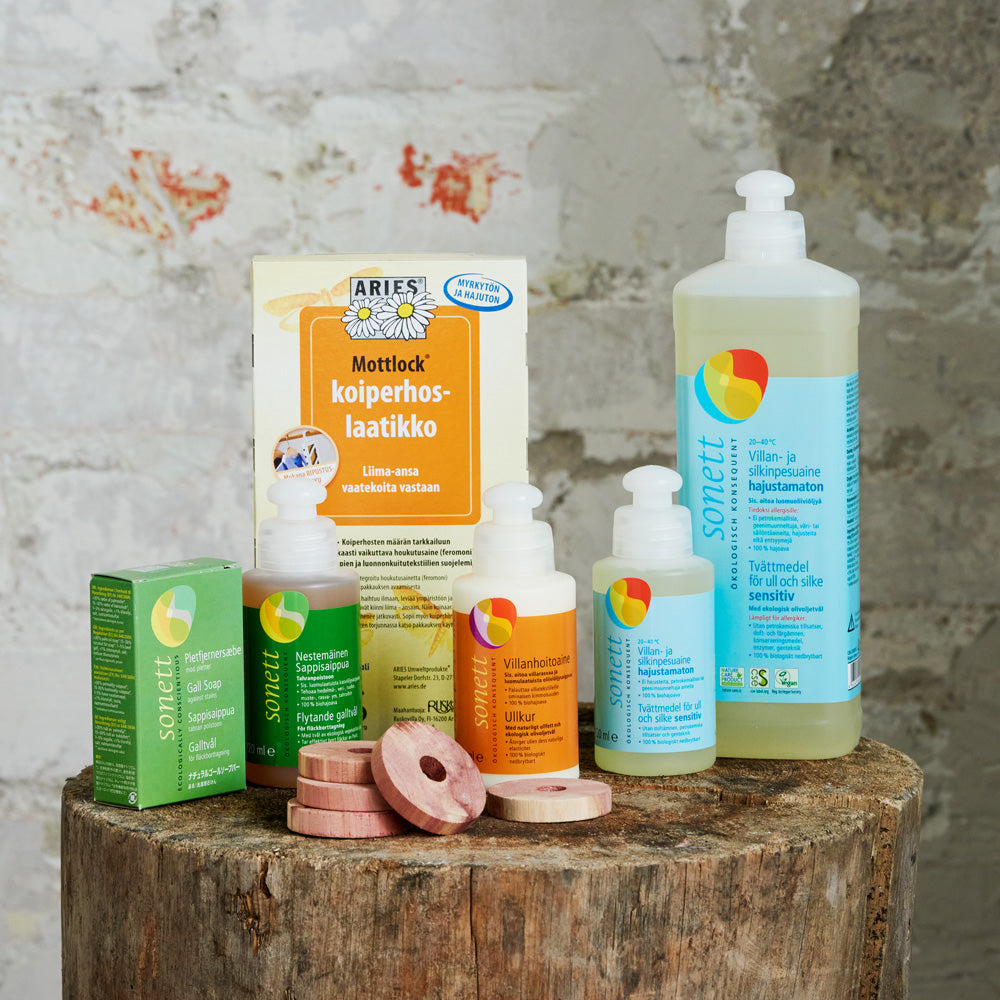
Washing instructions for merino wool
Merino wool garments and accessories can be washed by hand or in a washing machine using a 30°C hand wash or wool wash programme, with a maximum spin speed of 800 rpm. We recommend washing with Sonett laundry liquid for wool and silk and for stain removal Sonett gall soap. Do not use synthetic wool detergents containing bleach or enzymes, as they strip the wool's natural oils and weaken the fibers.
Wool garments are not suitable for tumble drying. After hand washing, excess water can be gently squeezed out by rolling the garment inside a thick terry towel. Do not wring the garment dry. Wool garments should be reshaped while damp and laid flat to dry, away from direct sunlight and heat sources.
If you use Sonett's laundry liquid, which contains olive and rapeseed oil, a separate lanolin treatment is not necessary except for the care of woollen nappy pants.
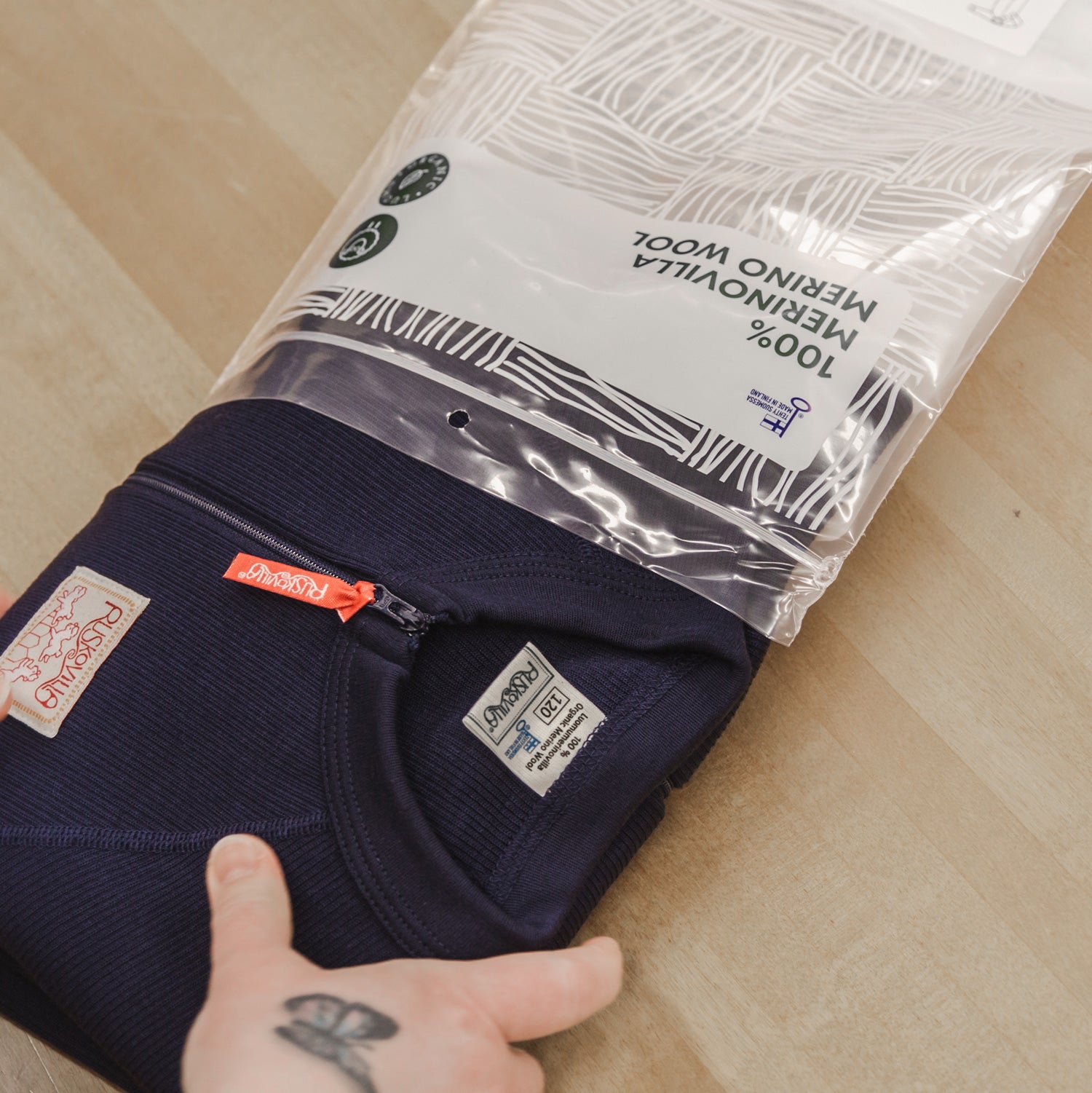
Care instructions for merino wool
Our wool products are not treated with moth repellents, which unfortunately makes them a big treat for moths and beetles. When not in daily use, wool products should be stored in a tightly sealed plastic bag out of direct sunlight. Our range also includes red cedar rings and moth traps, which are a safe and natural way to protect textiles.
Due to friction, wool may pill; in this case, you can try to gently remove the pills using a wool comb or a battery-operated fabric shaver. However, the wool should be stretched taut, for example, against an ironing board. Excessive use of a fabric shaver can thin and weaken the knit, so it should be used sparingly. Loose dirt and hairs can be removed with a clothing or lint brush.

Mend to extend the life cycle
Proper washing and storage are essential for a garment’s long lifespan. When time takes its toll and wear begins to show, it’s time to mend the garment. The best time to patch is when the fabric starts to thin but before any holes appear.
To make mending easier, our product range includes silk wool fabric patches, made for us by the Finnish company FabPatch Oy. The elastic patches make it easy to mend your wool and silk wool garments conveniently without a needle and thread.
Merino wool favourites
Wash and care instructions
Have a look at all washing and care instructions for different natural fibers we use. You can also find detailed wash and care instructions on the product pages, on the product size labels and on the product packaging.



